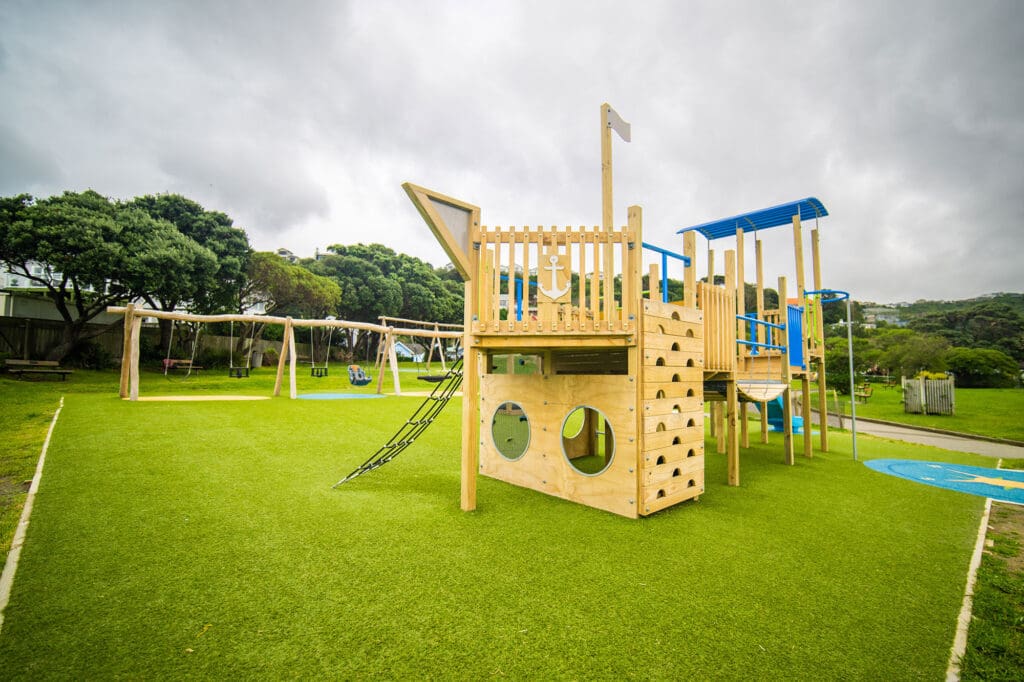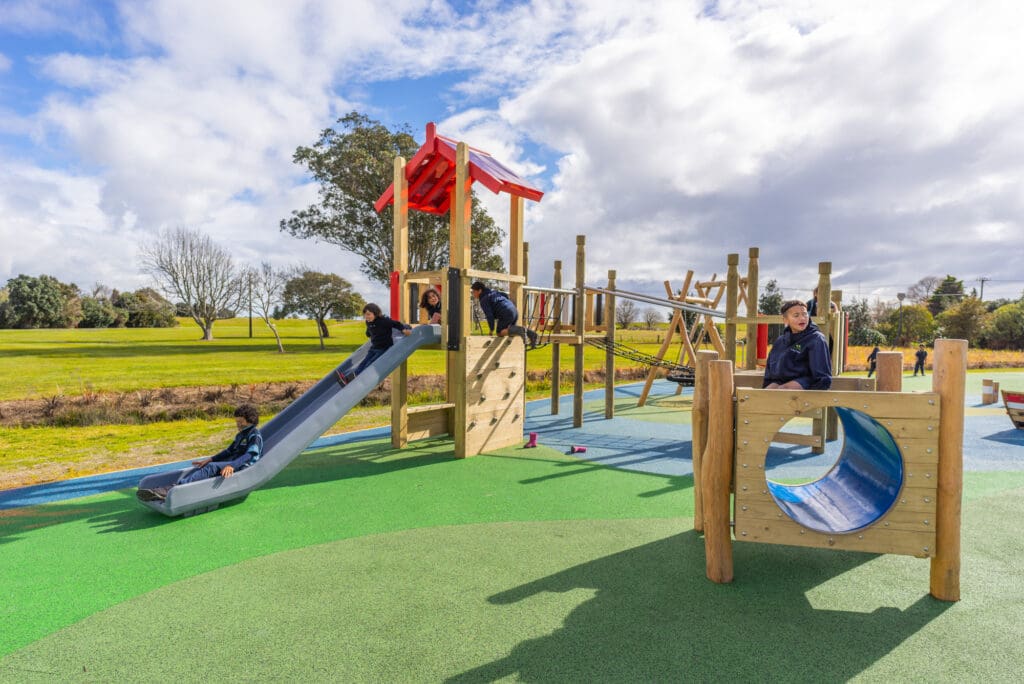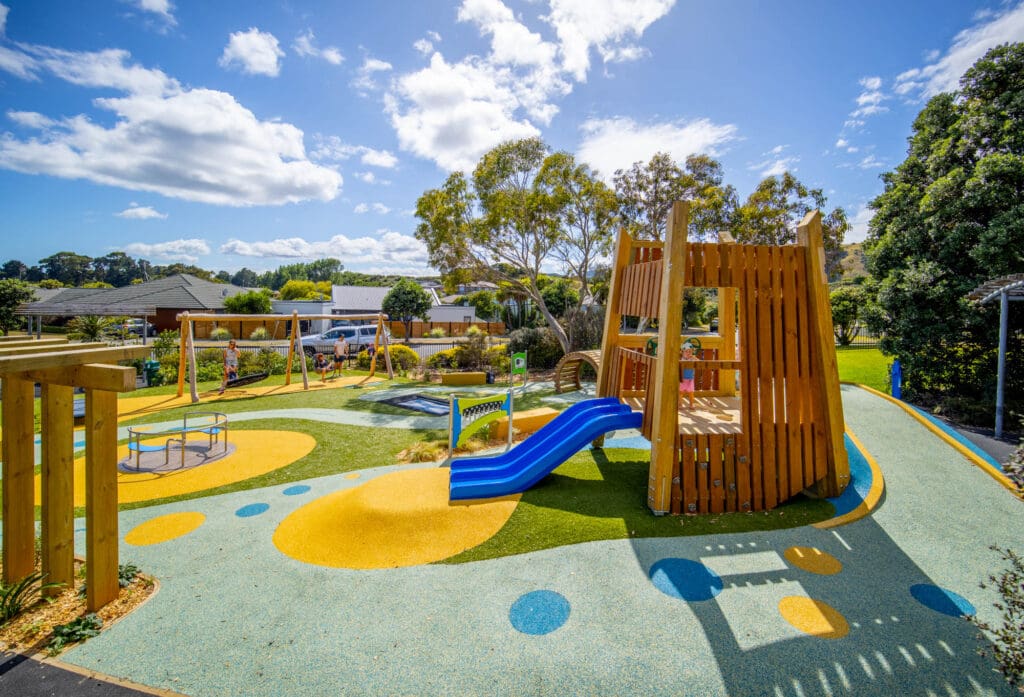Playground towers, key components in children’s play areas, offer a world of adventure, challenge, and learning. These structures, varying in complexity and design, are crucial for the physical, cognitive, and social development of kids.
Below, we compiled a list of all the towers you can have in your playground and what features they offer.
Basic Play Towers
Basic play towers are perfect for the youngest adventurers. These simple structures typically feature a slide and a few climbing elements.
They provide a safe and enjoyable introduction to outdoor play, catering to toddlers and preschoolers.
They are not as costly as other playground towers, but are not as packed with details and play value.
Multi-Activity Towers
Multi-activity towers are the centrepieces of fun and learning. They often include slides, climbing walls, rope bridges, and lookout platforms. These towers encourage physical development and cognitive skills like problem-solving and decision-making, offering a variety of activities in one place.

Themed Towers
Themed towers, such as pirate ships, castles, space rockets, and jungle huts, spark children’s imaginations. These play structures support creative and role-playing activities, which are crucial for language development and social skills.
Climbing Towers
Climbing towers, with their rock walls, rope ladders, and nets, focus on physical development. They help improve strength, coordination, and confidence, challenging children who love to climb. Different from multi-activity towers, these are focused on the climbing challenges.
Adventure Towers
Adventure towers are designed for the brave and energetic. These complex structures have multiple levels, different types of slides, and challenging climbing elements. They are well-suited for older children seeking thrilling play experiences.
Observation Towers
Observation towers, taller than most, offer a bird’s-eye view of the surroundings. Climbing to the top can enhance a child’s spatial awareness and appreciation for the environment, fostering a sense of discovery. The benefit of these towers are the role they can play along the whole space design.
Interactive Towers
Interactive towers blend play with learning. They may include sound-producing features, telescopes, or educational panels, offering sensory experiences that are both fun and educational. These towers can be built indoors or outdoors, packed with technology.
Sensory Towers
Sensory towers engage various senses through elements that produce sounds, have diverse textures, and are visually stimulating. These towers are especially beneficial for children with sensory processing disorders, enhancing sensory development in a playful environment.
Rope Course Towers
Rope course towers integrate elements of balance and coordination. With suspended bridges and balance beams, these structures provide a physically challenging experience that enhances problem-solving skills and physical fitness

Slide Towers
Slide towers focus primarily on the joy of sliding, featuring multiple slides of different types and heights. They cater to children’s love for speed and excitement, promoting balance and coordination. Simple, they are staples on playgrounds, where users go up the platform and slide down.
Modular Towers
Modular towers offer customization and adaptability. These structures can be expanded or changed with various components, making them a sustainable choice for evolving play needs.
Junior Towers
Designed for younger children, junior towers are smaller and less complex. They provide safe and accessible play options for toddlers, featuring activities that are easy and safe for little ones to navigate.
Senior Towers
In contrast, senior towers cater to older children ready for more challenging play. These structures are higher and more complex, with advanced features that promote physical skills and adventurous play.
Safety Considerations
Safety is paramount in playground design. It’s crucial to ensure that towers are age-appropriate, well-constructed, and regularly maintained. Parents and caregivers should always supervise children to ensure safe play.

Choosing the Right Playground Tower
Selecting the right playground tower involves considering the child’s age, interests, and available space. It’s important to balance fun, safety, and developmental appropriateness in your choice.
The Future of Playground Towers
The future of playground towers is bright, with ongoing advancements in technology and design. New trends are constantly emerging, promising even more engaging, safe, and innovative play structures for children.
Conclusion
Playground towers, in their many shapes, are more than play structures, they can be pieces of art, or features to spark imagination and foster learning. Whether a basic tower for toddlers or a complex adventure tower for older children, each type plays a vital role in a child’s development.
As we continue to recognize the importance of play, the world of playground towers will continue to evolve, offering diverse and exciting experiences for children of all ages.